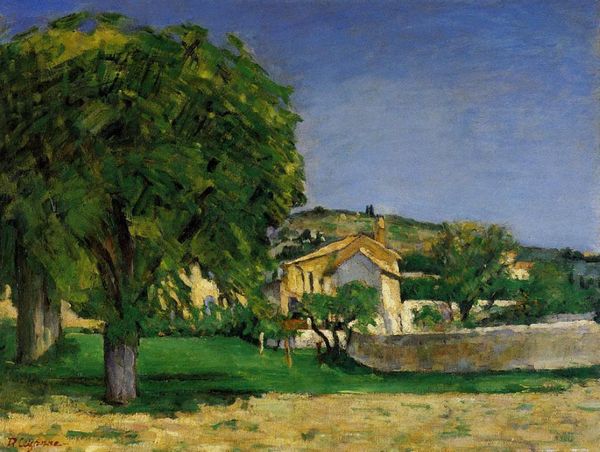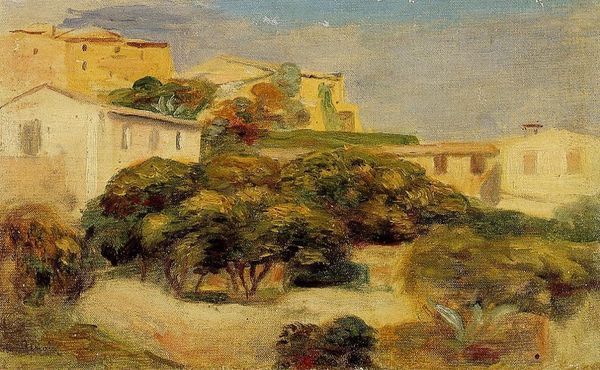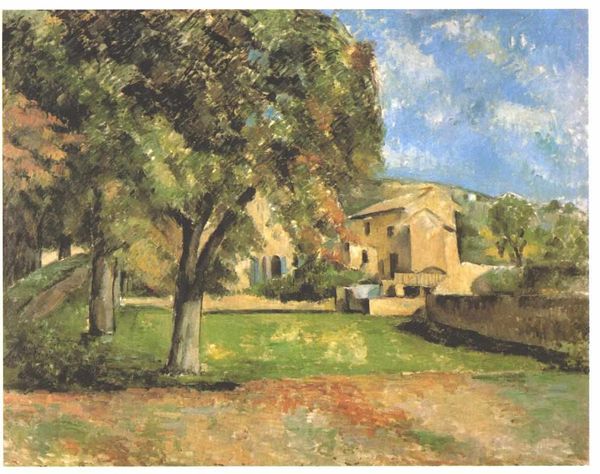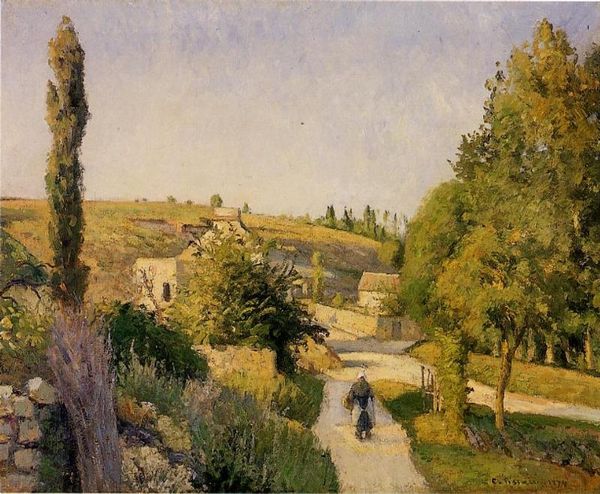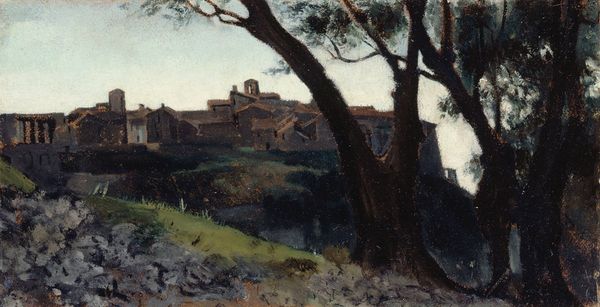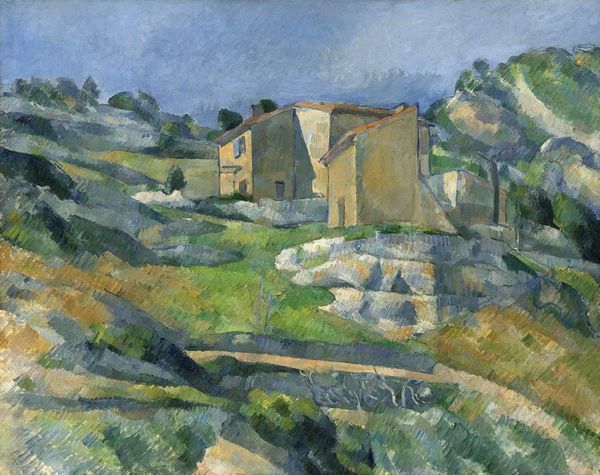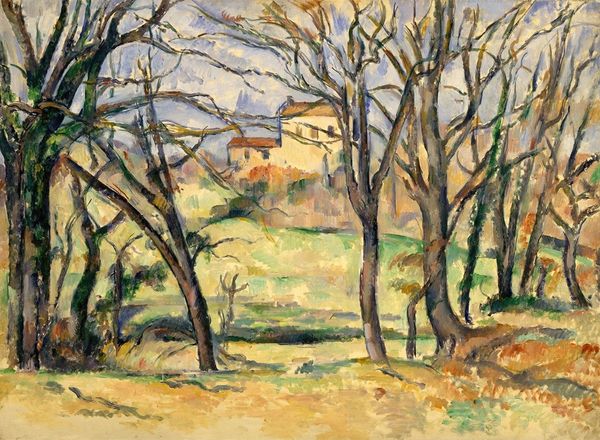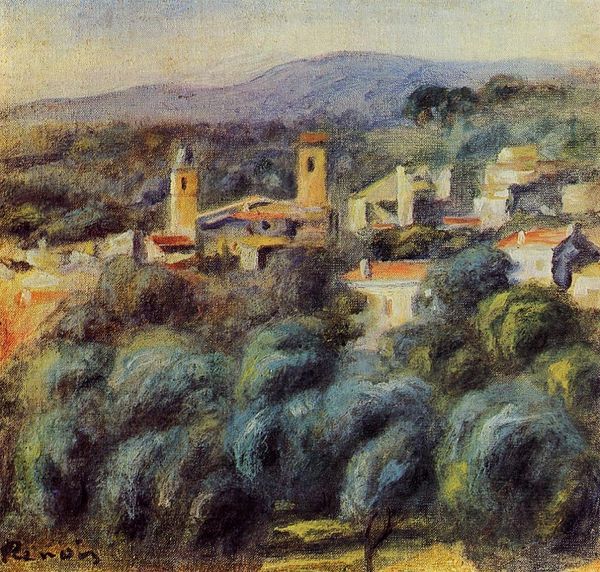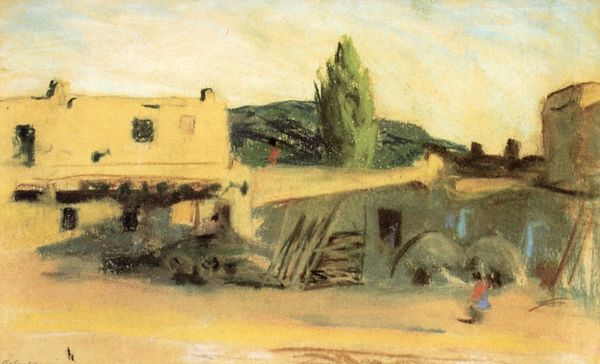
Copyright: Public domain
Editor: This is Paul Cézanne's "The Abandoned House," painted around 1879 using oil paint. It feels so still and solitary. What draws your eye when you look at this work? Curator: I'm struck by the recurring motif of the abandoned house across cultures. It often represents a transition, a loss of innocence, or perhaps a forgotten past. Look how Cézanne contrasts the solid, geometric forms of the house with the organic, almost chaotic growth of the trees. What feelings does this juxtaposition evoke for you? Editor: It's like the house is fighting a losing battle against nature. It makes me a little uneasy, like something's been disrupted. Curator: Precisely! Consider the symbolism of the color palette as well – the muted, earthy tones against the pale sky. Doesn't it suggest a kind of melancholy, a yearning for something lost? Notice how the architectural features, windows, and doors are stark openings within the built environment, reflecting an emotional landscape. What purpose do they serve here? Editor: They're empty…maybe like closed off opportunities or unfulfilled potential? I hadn't really noticed the significance until you pointed it out. Curator: Cézanne is asking us to consider the emotional weight buildings carry, reflecting our own interiority through their facade and form. Think about abandoned buildings in the collective memory and continuity in art history. What does this cultural trope convey to the viewer? Editor: I never really thought about it like that. There's more to the image than I initially realized. Thanks for your perspective. Curator: It's been illuminating to explore those interpretations with you. Let’s appreciate the rich symbolic layers that resonate deeply with our shared human experiences through history and in art!
Comments
No comments
Be the first to comment and join the conversation on the ultimate creative platform.
